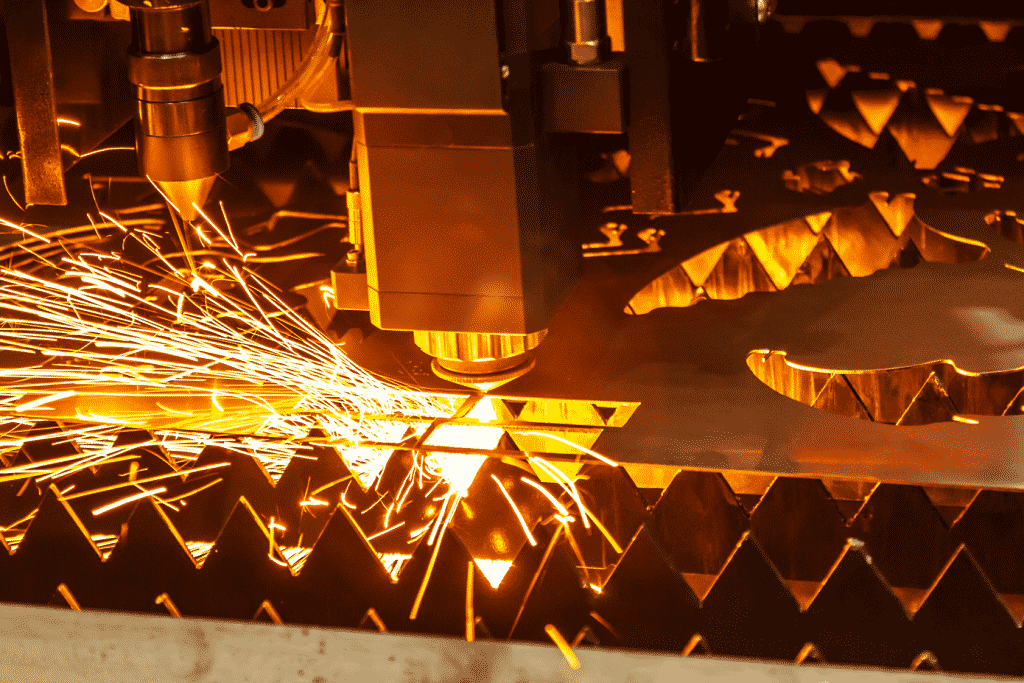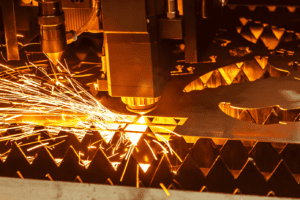Lasers, where might we be without them..? Well we certainly wouldn’t have space films that are half as entertaining as they are, but that is something for the future. The lasers we use today are very much grounded in science fact not science fiction and in our industry, they are invaluable for cutting plate metal with unparalleled accuracy, efficiency and cut quality over conventional CNC plasma cutters.
Laser cutting also allows for far more intricate, complex cutting with a very small heat affected zone and small kerf allowing for the crafting of ever more detailed shapes and holes, combine that with CNC control and you have impressive production line potential.
But how do laser cutters really work, how do their relative components combine to do what they do so well and what is the science behind them?
Laser is in an acronym which stands for Light Amplification by Stimulated Emission of Radiation so light forms a vital part of the science behind lasers, but light as we experience it naturally can never be strong enough to cut quickly and cleanly through solid matter, it needs to be amplified to the very high intensity of a particular colour or wavelength. In the case of CO2 that wavelength is infra red which is beyond the visible spectrum for us humans. This beam itself is born in your laser cutter’s resonator and is less than an inch wide, then it is guided by mirrors (or beam benders) towards the business end of your cutter; the nozzle assembly.
The Nozzle focuses the beam exponentially using a curved mirror or special lens within the laser cutting head to create a precise focus and a perfectly consistent, spherical pinpoint of light that, aided by compressed gas such as nitrogen or oxygen creates an area of extreme heat density that melts or vaporises material in much the same way as a magnifying glass can amplify sunlight to burn through a leaf.
Imagine kilowatt’s of energy focused on to a single pinpoint and you will start to get some idea of the temperatures involved in laser cutting although lasers are still only light and have no heat in themselves per se (as light has no mass) but when that light hits a solid, then the light is transferred to the material being cut heating it to the point where atomically speaking; the material vaporises into gas.
That is why laser cutting is so efficient, so accurate and has the potential to craft smaller and intricate components and shapes and that is why laser machinery, particularly the newer and more affordable compact fibre laser cutters are finding homes in more and more businesses today…
At Selmach our range of CNC laser cutters come with first class after sales service, technical advice and specialist training by our trained engineers, as well as an extensive range of ready to ship consumables.
To learn more about our laser machinery or even to see them in action for yourself at one of our three branches, get in touch today.
Published 25th June 2019


